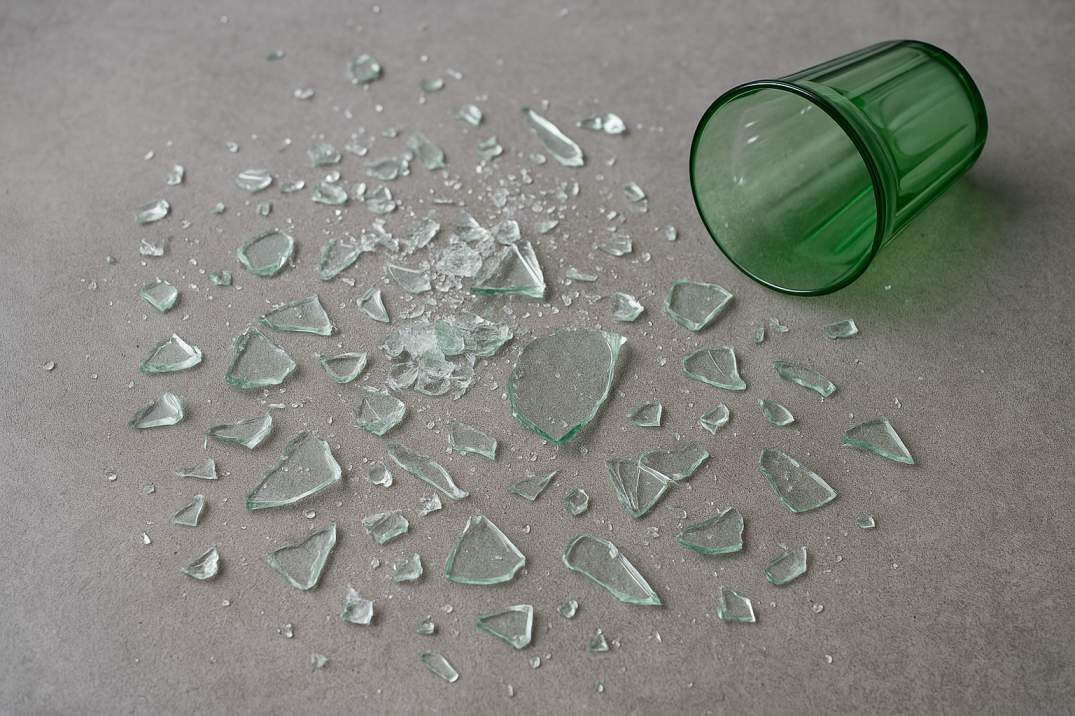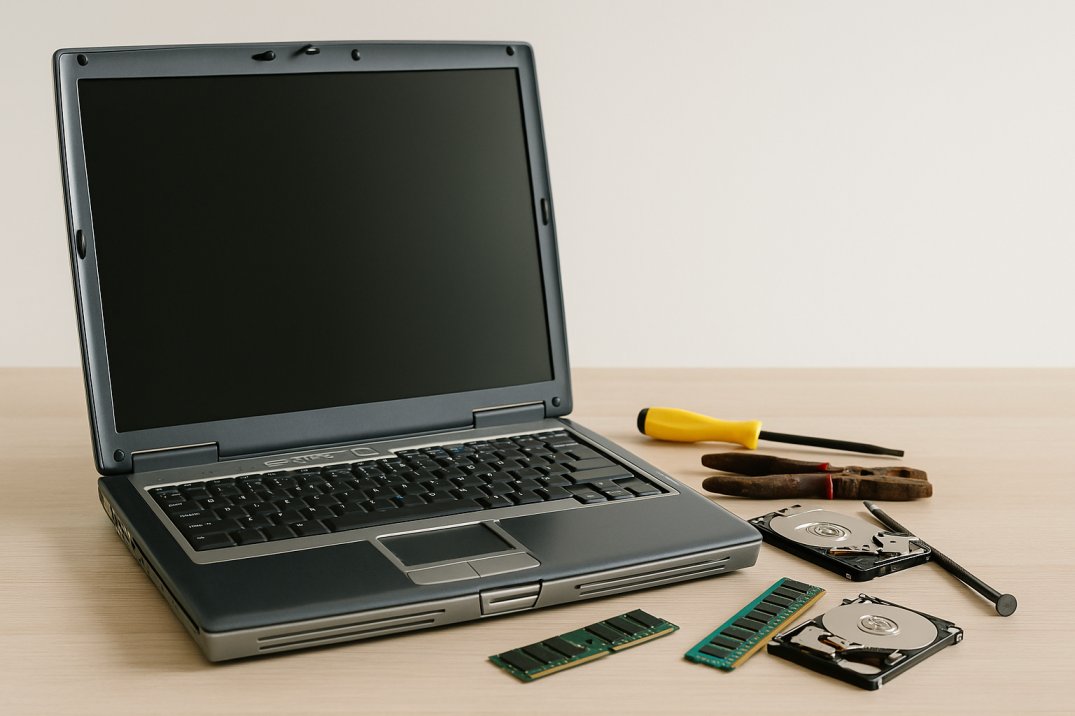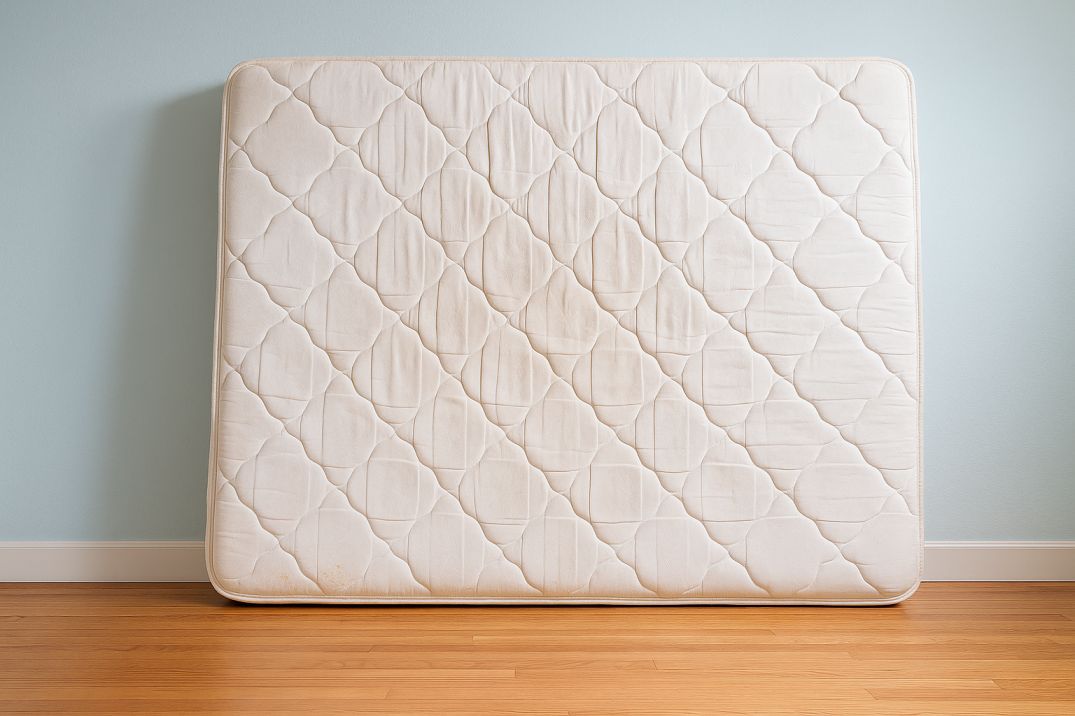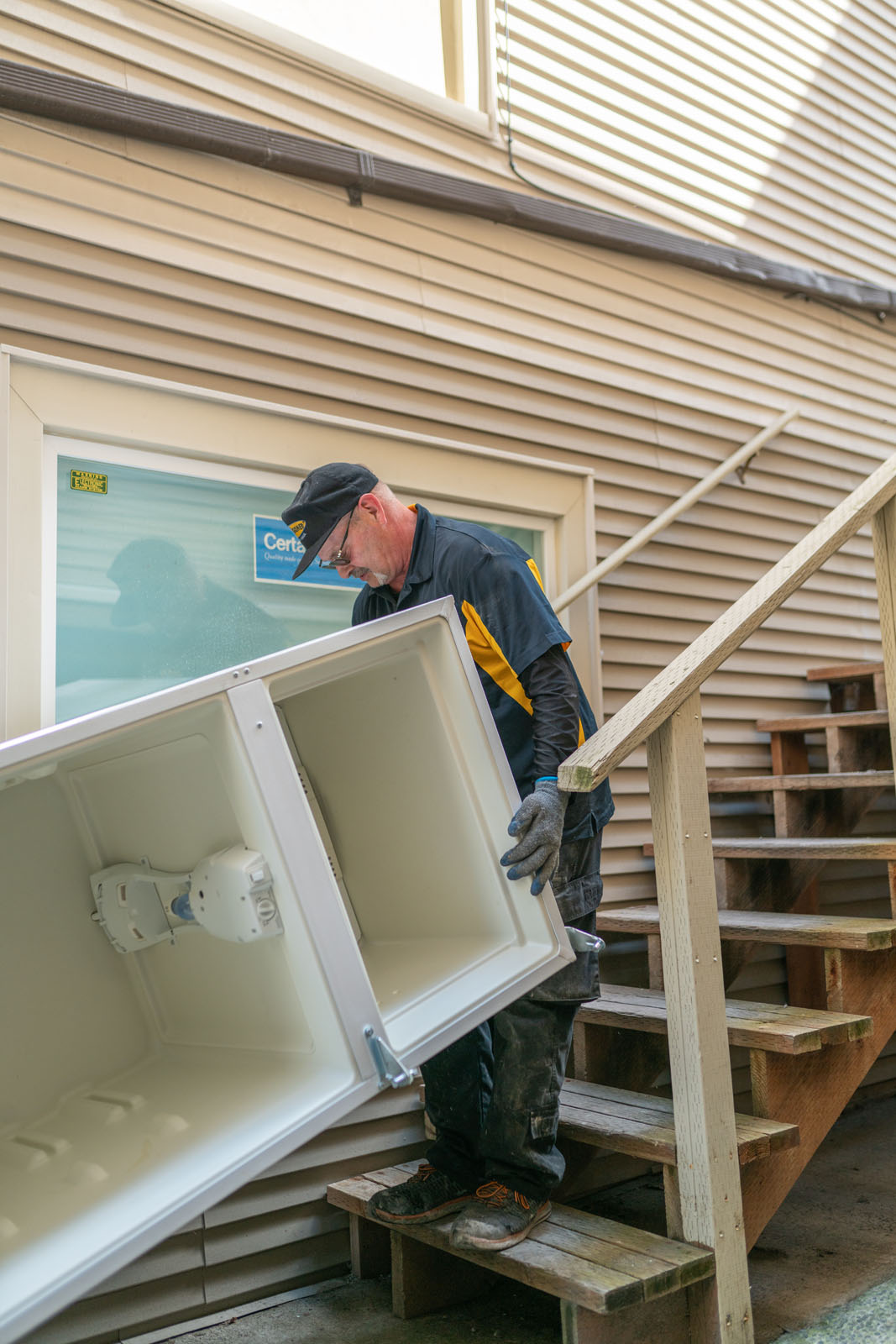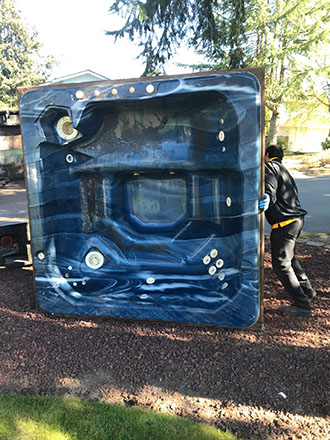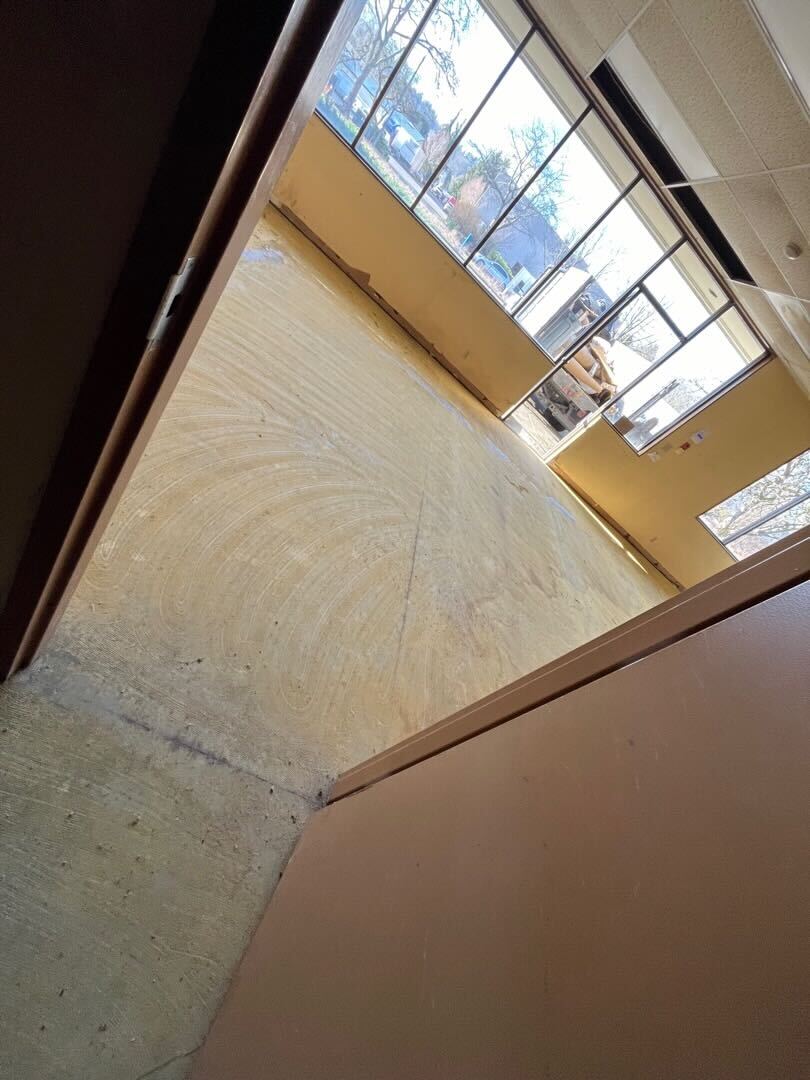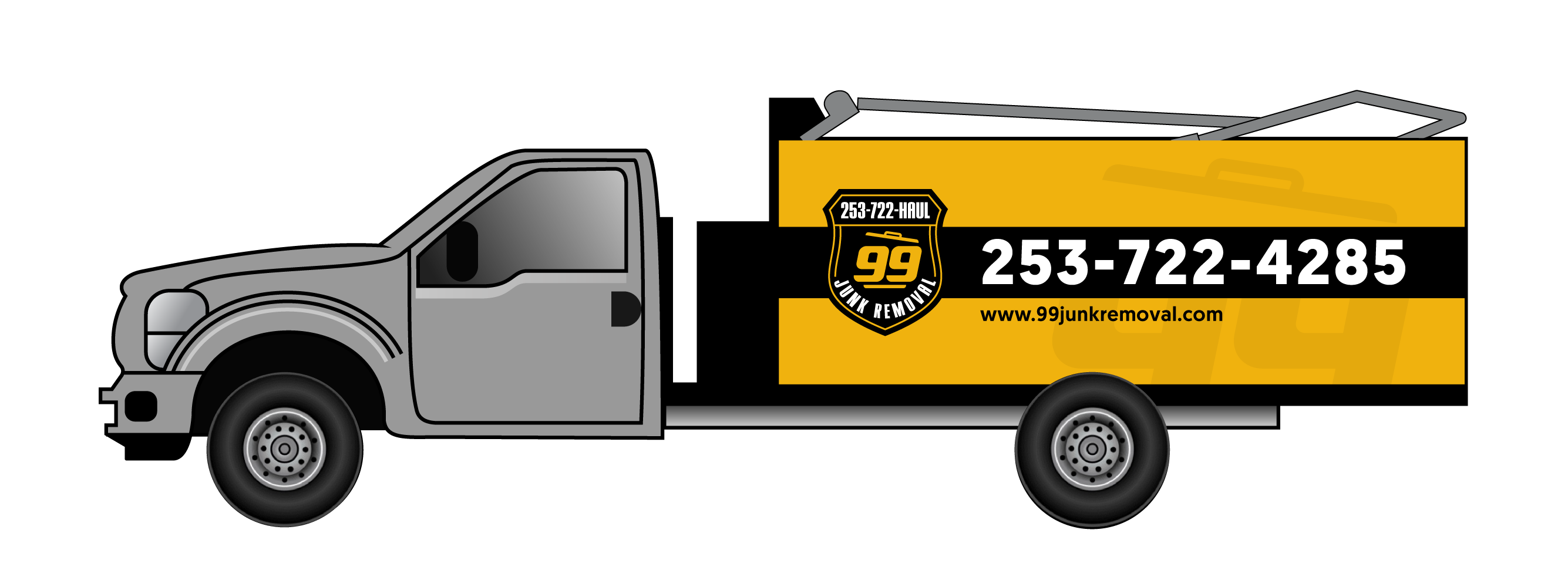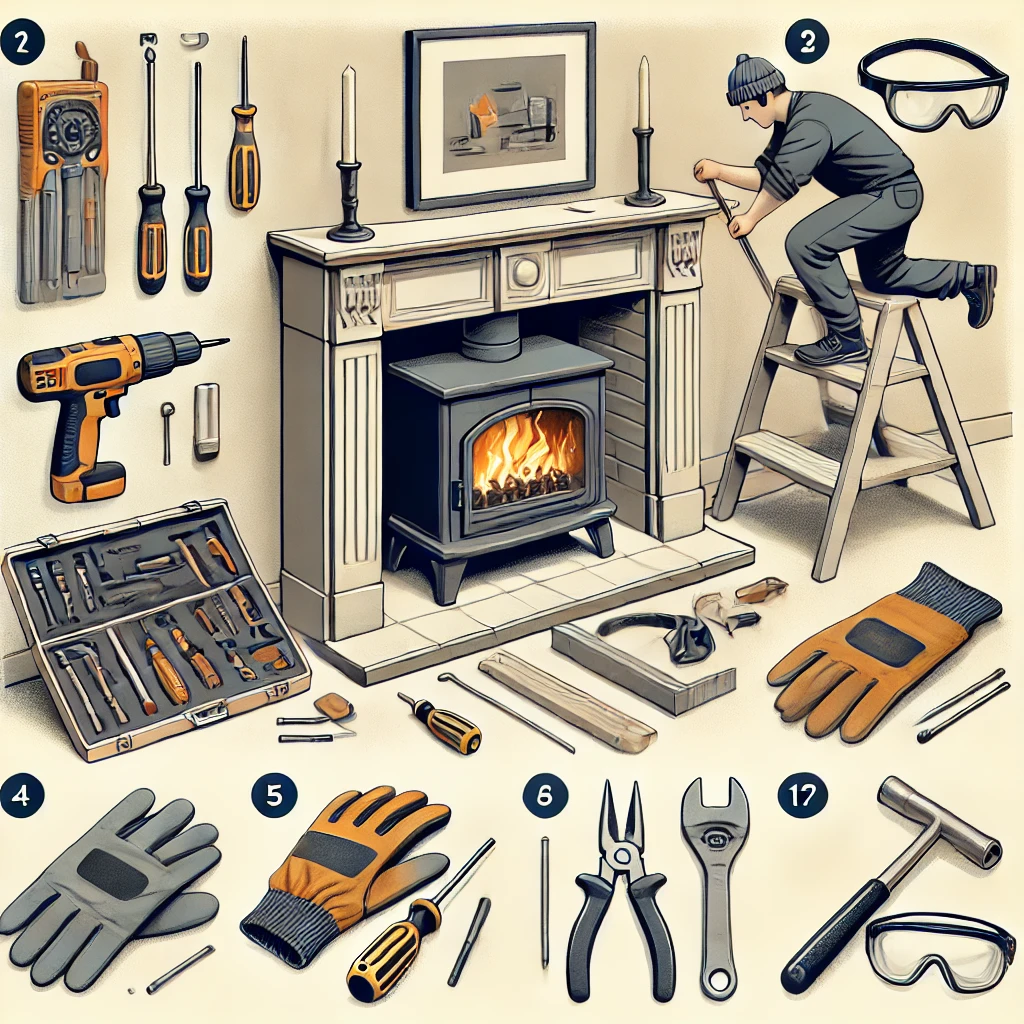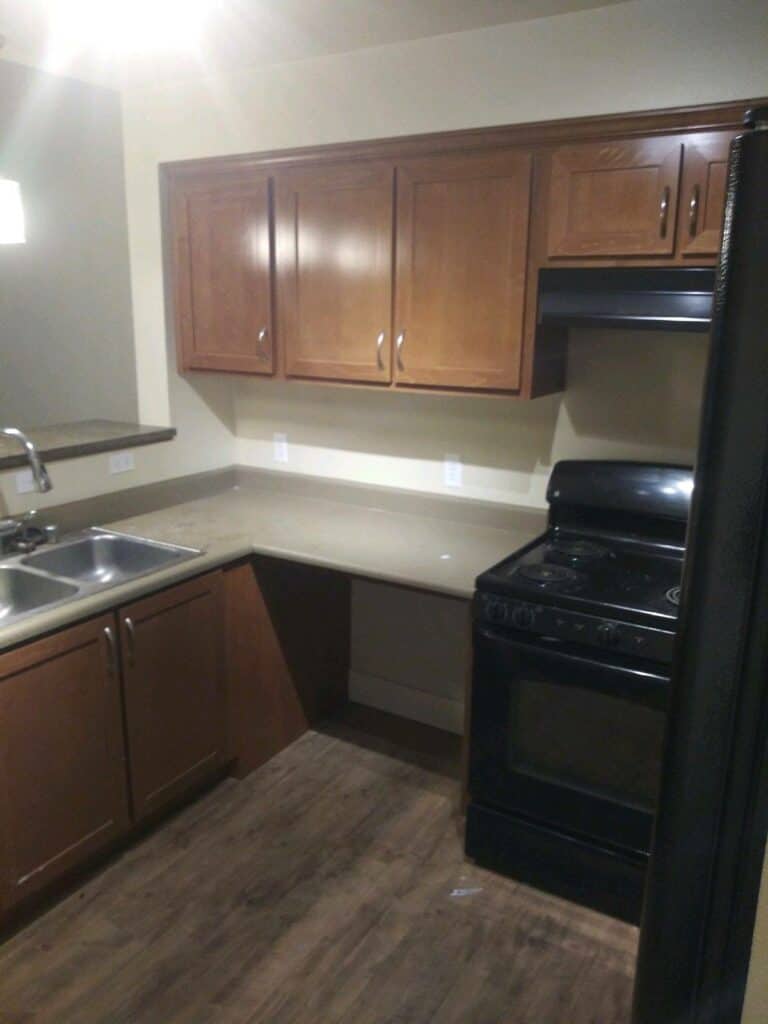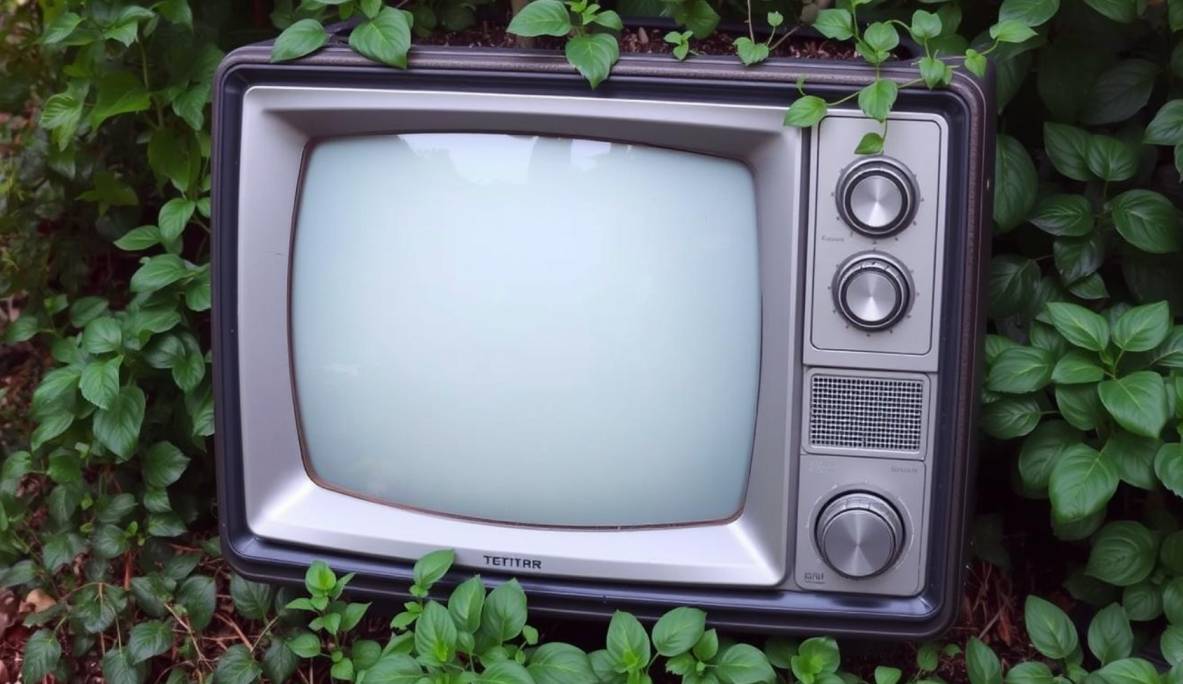Getting rid of an old toilet might sound simple — after all, it’s just another household fixture, right? But when it’s time to replace one, you’ll quickly realize toilet disposal isn’t as easy as dragging it to the curb. Toilets are made from heavy porcelain, often connected to plumbing systems, and can’t just be tossed in your regular trash bin.
Improper disposal can cause more problems than you’d expect. Broken porcelain can injure sanitation workers, contaminate recyclable materials, or even violate local waste regulations. Plus, tossing it into a landfill adds unnecessary bulk to an already overflowing waste system — and that’s not great for the environment.
The good news? You have plenty of safe, legal, and eco-friendly ways to get rid of your old toilet. Whether you plan to recycle the porcelain, donate a still-working fixture, or schedule a bulk pickup, this guide will walk you through every disposal option step-by-step — so you can handle it safely and responsibly.
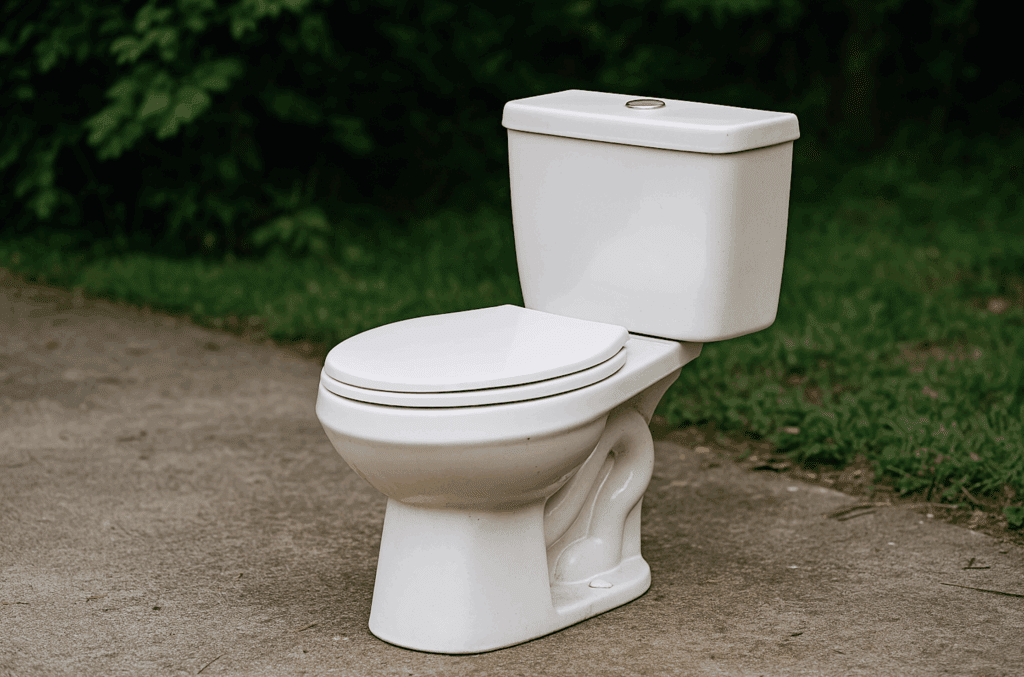
Why You Can’t Just Throw a Toilet Away
It might be tempting to haul your old toilet to the curb and let the garbage truck take care of it — but it’s not that simple. Toilets are made from heavy ceramic and porcelain materials that don’t break down naturally and can cause serious safety and environmental issues if dumped carelessly.
Environmental Risks of Dumping Toilets
When a toilet ends up in a landfill, the porcelain and glaze don’t decompose. Over time, they can leach chemicals into the soil and take up unnecessary space. Dumping also wastes materials that could otherwise be recycled or reused — crushed porcelain, for instance, can be turned into road base or gravel for construction.
Local Rules and Landfill Restrictions
Many cities have strict regulations against disposing of bulky bathroom fixtures in household trash. Landfills often require special handling for large items like toilets, bathtubs, and sinks. In some areas, dropping one off without approval can lead to fines. Instead, local waste management departments offer scheduled bulk pickup or drop-off days to ensure safe and compliant disposal.
Hazards of Broken Porcelain
Toilets aren’t just heavy — they’re brittle. When broken, they create sharp, jagged edges that can injure you or sanitation workers during handling. Wrapping and transporting them incorrectly can lead to cuts, accidents, and even plumbing damage if pieces are left behind.
Disposing of a toilet properly isn’t just about convenience — it’s about protecting people and the planet. Taking a few extra steps ensures your old fixture is handled safely, responsibly, and in compliance with local laws.
Step-by-Step: How to Prepare a Toilet for Disposal
Before you load up your old toilet and haul it away, there are a few things you should do to make the process clean, safe, and hassle-free. Preparing your toilet properly prevents leaks, minimizes odors, and keeps you (and anyone handling it later) safe from injury.
Turn Off the Water Supply
Start by turning off the water valve behind or beside your toilet. Flush once or twice to drain as much water as possible from the tank and bowl. Any remaining water can be soaked up with an old towel or sponge — trust us, this step will save you from a messy surprise later.
Drain and Dry Completely
Once the water is off, remove the remaining moisture inside the tank and bowl. Use a wet/dry vacuum or old rags to make sure it’s completely dry. A dry toilet is lighter, easier to move, and won’t leak during transport.
Remove the Bolts, Tank, and Seat
Next, use a wrench to unscrew the bolts at the toilet’s base. Gently lift the toilet straight up to avoid cracking the porcelain. If it’s a two-piece toilet, separate the tank from the bowl to make carrying easier. Don’t forget to remove the toilet seat and lid — they can usually be recycled or disposed of separately, depending on your local rules.
Clean and Wrap for Transport
Once disassembled, give your toilet a quick clean to remove grime or bacteria. Then wrap the unit in old towels, blankets, or cardboard to prevent sharp edges from causing damage during transport. If you’re using a junk removal service or dropping it off yourself, labeling it “Used Toilet” or “Porcelain Fixture” helps workers handle it appropriately.
Taking a few extra minutes to prep your toilet the right way makes disposal much smoother — and it keeps everyone (and everything) around it safe.
Disposal Options for an Old Toilet
Once your old toilet is disconnected and ready to go, the next question is — where does it go? You have several disposal options depending on your city’s waste policies, your budget, and how much effort you want to put in. Let’s break down the most common ones.
A. Curbside Bulk Pickup
Many cities and counties offer curbside bulk pickup services for large household items, including toilets. Start by calling your local waste management department or checking their website for guidelines.
- Some areas require an appointment or a special bulk tag, while others have designated pickup days each month.
- Be sure to drain, dry, and wrap your toilet before leaving it at the curb — most programs require items to be clean and safe for workers to handle.
- If your city doesn’t accept toilets through curbside pickup, they’ll usually point you toward the nearest approved facility.
This is often the easiest and most affordable way to dispose of a toilet — just make sure you follow your city’s specific rules to avoid fines or missed pickups.
B. Drop-Off at a Local Landfill or Transfer Station
If curbside pickup isn’t available, you can take your toilet directly to a landfill or transfer station. Most facilities accept porcelain fixtures but may charge a small disposal fee (usually based on weight).
- Bring a photo ID or proof of residence, as some sites only serve local residents.
- Expect to pay a $10–$30 disposal fee depending on your location.
- Transport your toilet safely — wrap it in a blanket or box to prevent chips or cracks in your vehicle.
This option works well if you’re already hauling other renovation debris or if your waste provider doesn’t collect bulky items at the curb.
C. Junk Removal Services
If lifting a toilet into your car sounds like the last thing you want to do, junk removal companies are your best bet. They’ll handle all the heavy lifting, hauling, and proper disposal for you.
- This is especially useful for bathroom remodels or multiple fixture replacements.
- Pricing usually depends on volume and labor, but you can expect to pay around $100–$150 for a single toilet removal.
While it’s not the cheapest option, it’s definitely the most convenient — and often the most environmentally responsible if the company recycles materials.
Recycling Old Toilets
Yes — your old toilet can be recycled! While it might not look like it, toilets are made from materials that can find new life in construction, landscaping, and even road projects. Instead of sending it to a landfill, recycling allows you to dispose of your toilet responsibly and give it a useful second act.
Can Toilets Really Be Recycled?
Absolutely. Most toilets are made of porcelain, a material that can be crushed and reused as aggregate for concrete, asphalt, or road base. Some recycling centers partner with local public works departments to repurpose this material for eco-friendly construction projects.
Recycling your toilet not only reduces landfill waste but also helps conserve natural resources by replacing raw gravel or sand used in traditional construction.
What Parts Can Be Recycled?
When you recycle a toilet, it’s not just the bowl that can be reused. Different components can be separated and repurposed:
- Porcelain body: Crushed and used for paving or road foundations.
- Metal bolts and screws: Sent to scrap metal recycling centers.
- Plastic seat and lid: Recycled through general plastic programs (check local acceptance).
- Rubber gaskets and wax rings: Usually not recyclable — dispose of these properly in the trash.
Before recycling, make sure your toilet is completely clean and free of non-recyclable parts like wax, plastic, or foam insulation.
Where to Recycle Your Old Toilet
Not every curbside recycling program accepts toilets, so you’ll need to locate a specialized recycling facility in your area. Here’s where to start:
- Local municipal waste centers — many have designated drop-off points for porcelain.
- Construction and demolition recyclers — they often accept broken or whole toilets.
- Home improvement stores or eco-centers — some have take-back programs for fixtures.
- Use Earth911.com or your local solid waste authority website to search for facilities that accept porcelain recycling.
Recycling your toilet might take a little extra effort, but it’s a small step that makes a big environmental impact. You’ll keep bulky waste out of the landfill and contribute to a more sustainable, circular use of building materials.
Donating or Repurposing a Toilet
If your old toilet is still in good working condition, don’t be too quick to toss it! Many organizations and creative DIYers can give it a second life. Donating or repurposing a toilet keeps it out of the landfill and helps someone else who might need an affordable home improvement solution.
When a Toilet Is Still Functional
A toilet that’s clean, crack-free, and fully operational can often be reused. Before donating, give it a thorough cleaning and inspect for leaks or worn seals. If it’s in good shape, several local charities or building material reuse centers may gladly take it.
Where to Donate Used Toilets
A few organizations specialize in taking gently used building materials, including toilets. Some great places to start include:
- Habitat for Humanity ReStores: Many locations accept toilets in working order for resale to fund community housing projects.
- Local building material reuse centers: These centers often take bathroom fixtures, sinks, and toilets for repurposing.
- Community shelters or churches: Some smaller nonprofits or housing programs may accept functional fixtures for renovation projects.
- Online giving platforms: You can post free listings on sites like Craigslist, Facebook Marketplace, or Freecycle for local pickup.
Just be sure to call ahead before donating — not every location accepts toilets, especially if they’re outdated or not water-efficient models.
Creative Reuse Ideas
If your toilet isn’t donation-worthy but still structurally sound, you can have a little fun with it! Here are a few creative ways people have repurposed old toilets:
- Garden planters: Fill the bowl and tank with soil and flowers — it’s quirky, but surprisingly effective.
- Outdoor art projects: A coat of paint and some imagination can turn an old toilet into a unique garden sculpture.
- Water feature: Convert the tank into a small fountain for backyard décor.
While these ideas may sound unusual, they’re a creative way to upcycle waste into something useful or decorative, reducing landfill waste in the process.
Whether you choose to donate or repurpose, your old toilet doesn’t have to go to waste. With a little effort, it can become a helping hand for someone in need — or even a conversation starter in your garden.
Eco-Friendly Alternatives of Toilet Disposal
When it comes to toilet disposal, the greenest option is always the one that keeps waste out of landfills. Toilets are bulky, heavy, and made of non-biodegradable materials — meaning they’ll sit in a landfill for centuries if not handled properly. Luckily, there are several eco-friendly alternatives that make it easy to dispose of your toilet responsibly and sustainably.
Recycling vs. Landfill: The Smarter Choice
Landfilling is the simplest option, but it’s also the least sustainable. Most landfills don’t process porcelain or separate recyclable materials, which means your old toilet simply becomes long-term waste.
Recycling, on the other hand, gives your toilet a second life. The porcelain can be crushed and used as aggregate for roads, sidewalks, or building foundations. Even the metal bolts and handles can be melted down and reused. Choosing recycling helps reduce landfill burden, cut down CO₂ emissions, and support circular construction efforts — a win for both you and the planet.
Why Certified Recycling Facilities Matter
Not all recycling centers are created equal. Some facilities may claim to recycle but end up sending waste to foreign landfills or unregulated dump sites. That’s why it’s important to look for certified recyclers, such as those accredited under R2 (Responsible Recycling) or e-Stewards standards. These certifications ensure:
- Safe handling of materials
- No illegal dumping
- Environmentally responsible reuse and processing
You can easily find certified facilities through your local waste management website or directories like Earth911.com and EPA’s eCycling database.
Minimizing Waste During Bathroom Renovations
If your toilet disposal is part of a larger bathroom remodel, there are a few ways to make the entire process more sustainable:
- Reuse what you can: Fixtures like faucets, mirrors, or shelving might still be useful.
- Choose low-waste materials: Recycled tiles, eco-friendly paints, and water-saving toilets reduce your project’s footprint.
- Bundle debris for recycling: Many junk removal companies now offer green disposal services, ensuring that usable materials get reused instead of dumped.
By planning ahead and choosing eco-conscious options, you can transform your renovation into a project that’s good for your home and the environment.
Sustainability doesn’t have to be complicated — it just takes a few mindful choices. Whether you’re recycling, donating, or reusing, every step toward greener disposal helps build a cleaner, more responsible community.
FAQs About Toilet Disposal
When it comes to getting rid of an old toilet, a few common questions always pop up. Here’s a quick guide to help you understand how to handle your bathroom fixture responsibly — without breaking any rules or wasting money.
1. Can I Recycle a Toilet Seat and Tank Separately?
Yes — and it’s often the smarter way to do it. Toilet seats, typically made of plastic or wood, are usually not recyclable and should go in the regular trash unless you find a specialty recycling program. The porcelain tank and bowl, however, can be taken to a construction material recycler or porcelain reuse facility, where they’ll be crushed into aggregate used in roads and concrete.
Tip: Remove all metal bolts, handles, and internal parts before recycling to make processing easier.
2. Do Plumbing Companies Take Old Toilets?
Many do! If you’re having a new toilet installed, ask your plumber or installation company whether they offer disposal as part of the service. Some contractors include removal in their quote, while others may charge a small fee to handle transport and drop-off. This is a great option if you want to avoid the hassle of hauling a heavy fixture yourself.
3. What Happens to Toilets After Recycling?
Once your old toilet reaches a recycling center, it’s broken down into reusable materials.
- Plastic components may be recycled separately or disposed of safely. This process helps reduce waste and supports eco-friendly construction practices — turning your old bathroom fixture into something useful again.
- Porcelain is crushed and repurposed for roads, sidewalks, and concrete.
- Metal parts (like bolts or hinges) are melted down for reuse.
4. Are There Penalties for Illegal Dumping?
Absolutely — and they can be serious. Dumping a toilet illegally (like leaving it by the curb, on private property, or in unauthorized areas) can lead to fines ranging from $100 to $1,000 depending on your city or county. Some regions even impose additional cleanup fees or legal action for repeat offenders. It’s always safer and smarter to use approved drop-off sites, city collection programs, or licensed junk removal services.
5. How Can I Find a Free Pickup Service Near Me?
There are a few options worth checking:
- Local waste management departments sometimes offer free bulky item pickup days once or twice a year.
- Retailers or installers may include free haul-away when you purchase a new toilet.
- Nonprofits like Habitat for Humanity ReStores occasionally accept usable toilets and may offer pickup depending on location. You can also visit Earth911.com or your city’s website to find recycling programs and pickup options nearby.
Disposing of a toilet properly might take a bit of planning, but it’s well worth the effort. You’ll help protect the environment, stay compliant with local regulations, and maybe even give your old fixture a new purpose in someone else’s home or a construction project.



